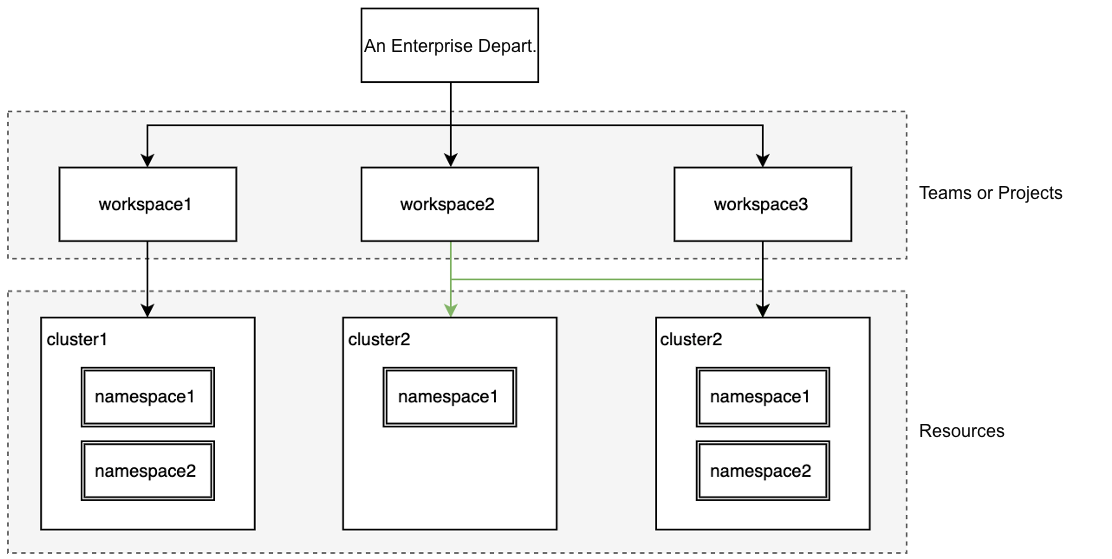What is Workbench?¶
Workbench is a container-based DevOps platform for cloud native applications. It serves as a unified entry point for creating applications in DCE, providing flexible and easy-to-use pipelines, GitOps, progressive delivery, project management, and integration of tools about product lifecycle and agile development.
Workbench features application management, pipeline orchestration, credential management, GitOps, and more. Application management covers various aspects of managing cloud native applications. It supports a range of "multi-form" applications, including Kubernetes native applications, Helm applications, and OAM applications. With comprehensive lifecycle management, it facilitates scaling, logging, monitoring, and application updates. Additionally, it enables seamless integration and management of Spring Cloud, Dubbo microservices, and cloud native microservices based on Kubernetes and Service Mesh.
Pipeline orchestration provides a flexible and customizable CI/CD mode. It offers four pipeline creation modes: custom creation, Jenkinsfile-based creation, template-based creation, and the ability to create multiple-branch pipelines. The graphical user interface (GUI) allows for easy editing of pipelines. It enables building applications from various sources, such as source code in GitHub repositories, JAR packages, Helm charts, or container images.
Credential management manages different types of credentials required for the pipeline's code repositories and image registries.
GitOps introduces the concept of continuous deployment using Git repositories, providing control over the application release and deployment process post-code building. It leverages Argo CD to automate the deployment of applications frequently and continuously to production environments. Workbench supports the creation, synchronization, and deletion of Argo CD applications, enabling efficient management of the deployment process.
Features¶
Workbench features application management, pipeline orchestration, credential management, GitOps, repository management, canary release, and toolchain integration. For more details, see Feature Overview
Role in DCE 5.0¶
DaoCloud Enterprise 5.0 is a high-performance, scalable cloud-native operating system. It can provide a consistent and stable experience in any infrastructure and environment, supporting heterogeneous clouds, edge clouds, and Multicloud Management. DCE 5.0 integrates the latest service mesh and microservice technologies, which can track the entire lifecycle of each traffic, help you understand the detailed metrics of clusters, nodes, applications, and services, and visualize the health status of applications through dynamic dashboards and topology maps.
Based on the Cloud Native Foundation of DCE 5.0 for container, permission, and resource management, Workbench can create applications, pipelines, GitOps processes, canary release jobs, and toolchains, functioning as a underlying infrastructure of higher-level modules, such as Microservice Engine, Servie Mesh, Multicloud Management, etc.

Separate Install¶
It is recommended to install Workbench through the installation package of DCE 5.0 Enterprise Package, because you can install all modules of DCE 5.0 once a time with that package, no need to worry about incompatibility.
However, if you want to install or upgrade Workbench separately, run the following commands:
export VERSION=**** # Modify to the actual version deployed.
helm repo add mspider-release https://release.daocloud.io/chartrepo/amamba
helm repo update amamba
helm upgrade --install --create-namespace --cleanup-on-fail amamba amamba-release/amamba -n amamba-system --version=${VERSION}
Download DCE 5.0 Install DCE 5.0